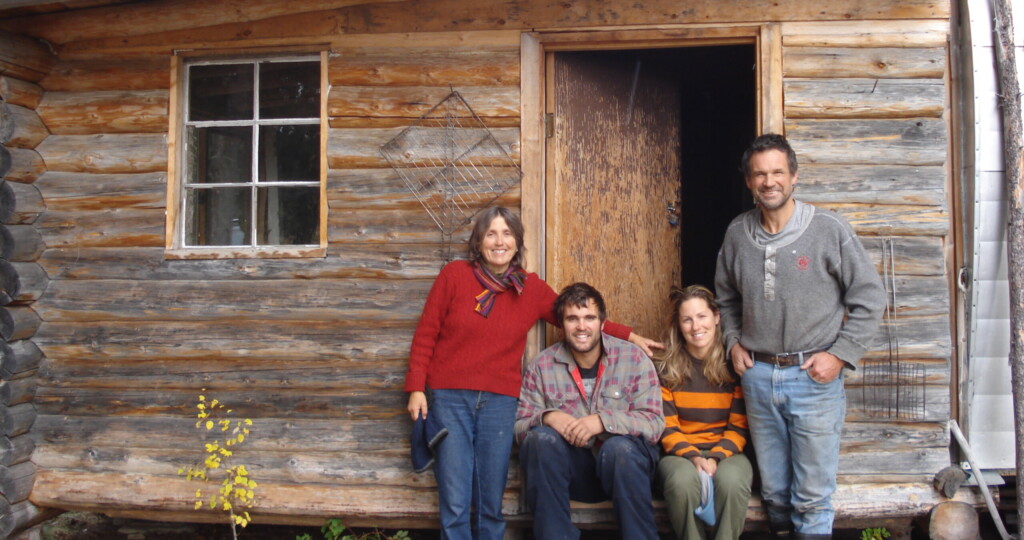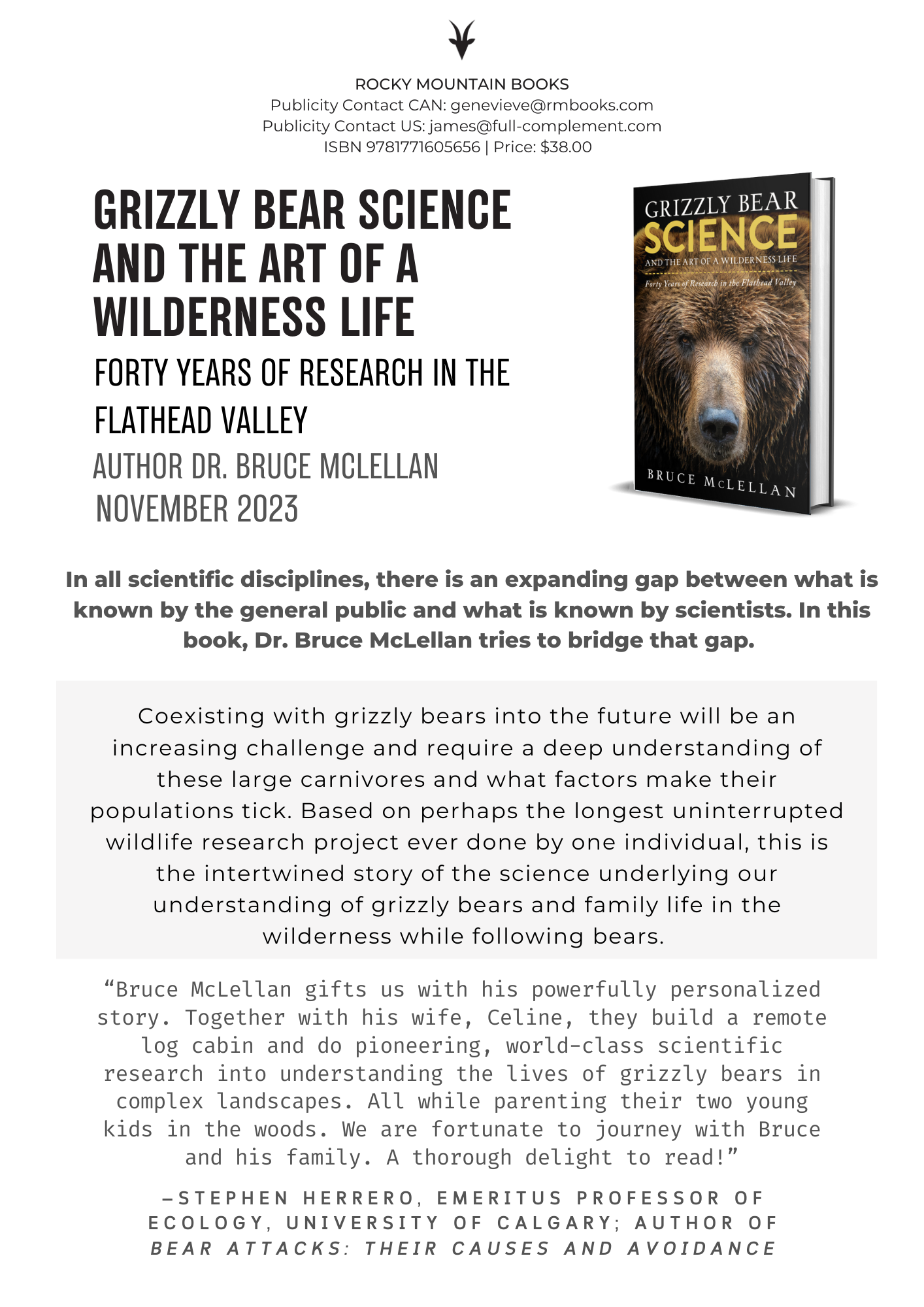Dr. Bruce McLellan has spent more than 40 field seasons in B.C.’s Flathead Valley studying grizzly bears. That remote region represents the most undamaged bear habitat left in North America.
The newly released book Grizzly Bear Science and the Art of a Wilderness Life: Forty Years of Research in the Flathead Valley, McLellan bridges the gap between what ordinary people know about these majestic carnivores and what scientists know, with enormous implications for our shared future.
Based on probably the longest uninterrupted wildlife research project ever conducted by a single person, Grizzly Bear Science reveals the intertwined story of the research underlying our understanding of grizzly bears and McLellan’s family life in the wilderness while studying them.

Bruce took the time to answer a few questions about the book:
Q: What will we learn from Grizzly Bear Science that isn’t in your extensive scientific publications?
Bruce: The book is about grizzly bear science and our life as a family living in the Flathead studying grizzly bears. Much of the science part has been covered in the 40 or so science journal papers I have written, but not all. There is new information on home ranges, dispersal, foraging behaviour, habitat selection, activity budgets, and population processes including infanticide. Mostly, however, the book is written in a format that is much easier to understand than my journal papers that I’m sure nobody, except a few grizzly bear researchers, have read.
Q: Who should read this book?
Bruce: People who are interested in grizzly bear behaviour, population ecology, and conservation, or people interested in the joys and challenges of having and raising a family in a wilderness area.
Q: What do people and governments get right about managing grizzly bears, and what do they get wrong?
Bruce: This all depends on their values and goals, and these have changed enormously over the past century. Grizzly bear populations are generally increasing (not all of them) so people have been doing fairly well for grizzly bears. Now we are facing new challenges as bears are living closer and closer to settlements.
Q: What is the path forward for grizzlies and people as we share space in British Columbia?
Bruce: We are entering a new paradigm of coexistence where the focus will be on grizzly bears living closer to people, which means cleaning up our act with the almost endless types of attractants (garbage, fruit trees, compost, crops, livestock, chickens, etc.) and more intensive management of individual bears that live near people.

